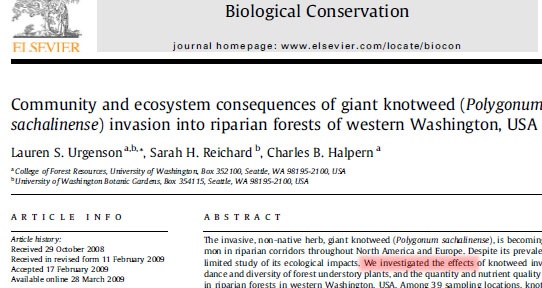Contact us with questions:
Scientific research is usually reported in peer reviewed journals or as conference proceedings. For your research, you'll likely use the journal literature.
What's peer review? Evaluation by others working in the same field.
NCSU Libraries provides an excellent three-minute explanation here.
Primary Research Articles* (original research articles)
Research articles report the results of research activity or findings. The author explains why and how the research was done and what the results mean. Published in peer reviewed or referreed publications (journals). Research articles are primary sources.
Parts of a research article:
*Supplementary materials including data are often available online.
Communications and Letters
Concise reports of recent, significant research findings. Authors want to publish before someone else publishes similar findings. The focus is on rapid communication and broad dissemination. Communications are published in peer reviewed journals. Communications and letters are primary sources.
Examples: Chemical Communications, Physical Review Letters, and the Letters sections of journals such as Nature and Science.
Review Articles^
Review articles attempt to summarize and synthesize prior research. These articles can provide useful background about the major developments, important contributors, gaps in research, and current debates on a particular topic and may suggest future directions for research. Review articles are a great way to identify key articles and provide lots of references or citations. They are published in peer reviewed journals. Review articles are considered secondary sources because the author did not conduct the research.
^Most databases/indexes such as the Science Citation Index or PubMed allow you to select "Review" as a document type or article type.
Conference Proceedings or Proceedings
Describe research presented at a conference. Conference proceedings may be long papers or limited to an abstract. These publications may or may not be peer reviewed. The Conference Proceedings Citation Index- Science (CPCI-S) is an option on the search page for the Science Citation Index.
Pre-Print or Post-Print
A pre-print is the original version of a manuscript prior to peer review and formatting.
A post-print is the final version of the manuscript submitted for publication.
Published version/PDF is the version of record with full formatting and copyediting.
Example of pre-print repositories: arXiv.org (pronounced like "archive")
What's in a name?
Proceedings of the National Academy of Sciences is a peer reviewed journal with original research articles - not conference proceedings.
Physical Review Letters are rapid communications or letters - not review articles.
When in doubt, ask a faculty member, graduate student, or librarian.
Heritability of Attractiveness to Mosquitoes
G. Mandela Fernández-Grandon, Salvador A. Gezan, John A. L. Armour, John A. Pickett, James G. Logan

Female mosquitoes display preferences for certain individuals over others, which is determined by differences in volatile chemicals produced by the human body and detected by mosquitoes. Body odour can be controlled genetically but the existence of a genetic basis for differential attraction to insects has never been formally demonstrated. This study investigated heritability of attractiveness to mosquitoes by evaluating the response of Aedes aegypti (=Stegomyia aegypti) mosquitoes to odours from the hands of identical and non-identical twins in a dual-choice assay. Volatiles from individuals in an identical twin pair showed a high correlation in attractiveness to mosquitoes, while non-identical twin pairs showed a significantly lower correlation. Overall, there was a strong narrow-sense heritability of 0.62 (SE 0.124) for relative attraction and 0.67 (0.354) for flight activity based on the average of ten measurements. The results demonstrate an underlying genetic component detectable by mosquitoes through olfaction. Understanding the genetic basis for attractiveness could create a more informed approach to repellent development.
Citation: Fernández-Grandon GM, Gezan SA, Armour JAL, Pickett JA, Logan JG (2015) Heritability of Attractiveness to Mosquitoes. PLoS ONE 10(4): e0122716. doi:10.1371/journal.pone.0122716
PDFs are the preferred format for articles. It is worth finding the link to the PDF so that the layout of images and text is accurate. Also you can download PDFs.
